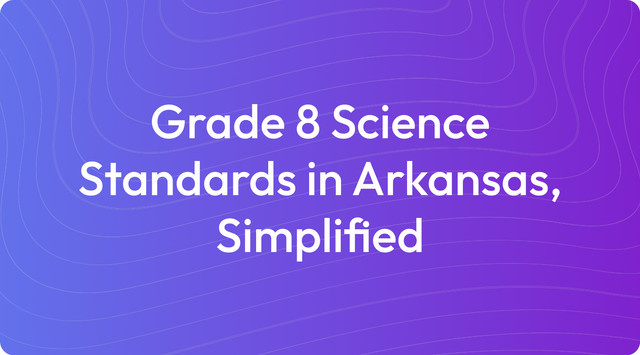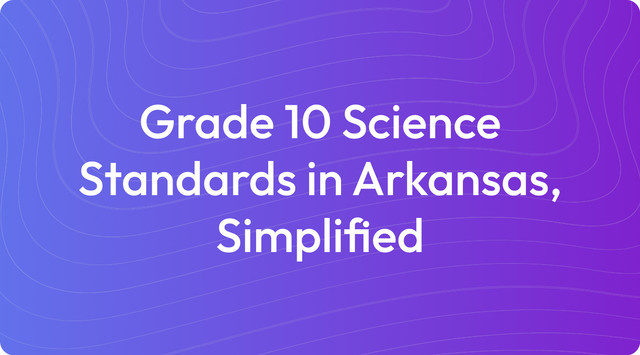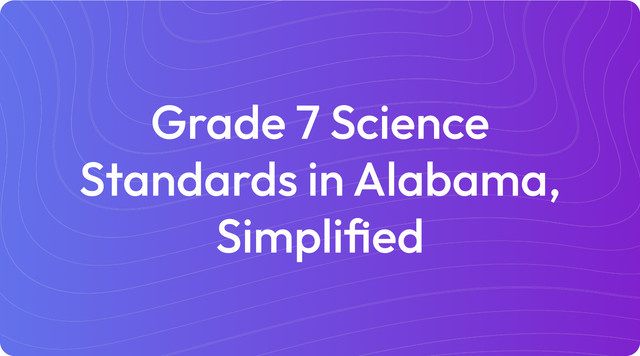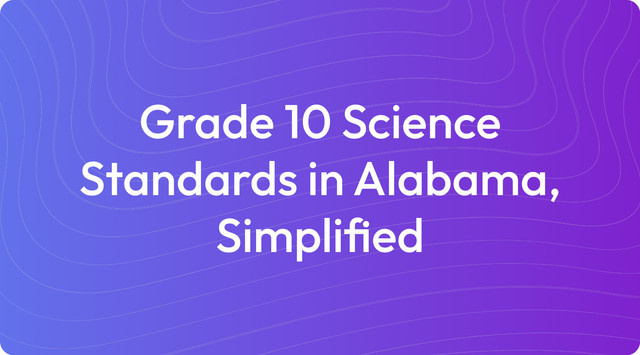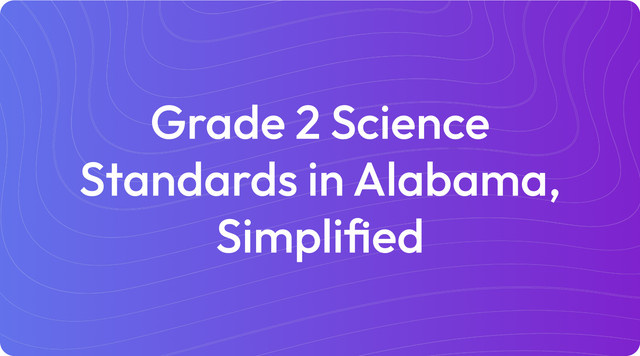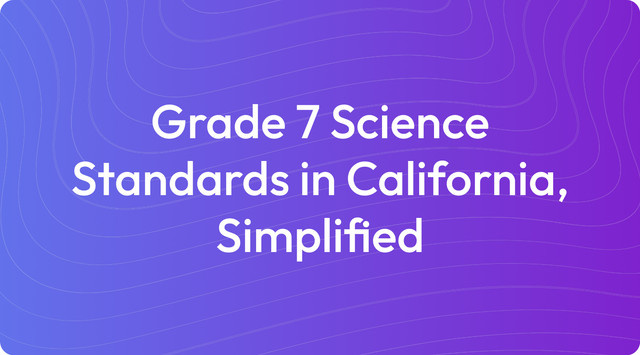Grade 10 Science Standards in Alaska, Simplified
Grade 10 science in Alaska focuses on biology, ecosystems, genetics, and engineering design. Find simple standards—read more on TeachShare!
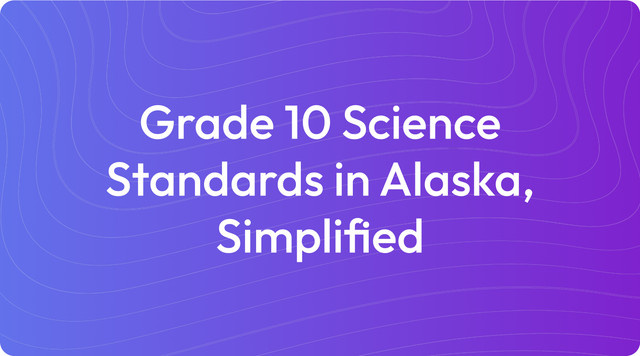
We understand that working with state standards is a core part of teaching. They provide the framework for your curriculum, but interpreting them and finding aligned resources can be a challenge. We're here to help you connect those standards to practical classroom application, making your planning process a little smoother.
Education standards are learning goals that outline what students are expected to learn at each grade level. For teachers, they provide clear benchmarks for student progress without prescribing how to teach the material. For example, Alaska’s Grade 10 Science Standards require students to design a device that converts energy, but you have the flexibility to decide on the specific activity, such as building a small wind turbine.
What Are Grade 10 Science Standards in Alaska?
Alaska's Grade 10 science standards are built upon the Science Standards for Alaska (SSA), which adapt the Next Generation Science Standards to the state's unique context. These standards are designed to deepen your students' understanding of advanced scientific concepts through hands-on investigation and real-world problem-solving. The standards are organized into four main focus areas:
Physical Science (PS): Matter, Energy, and Forces
- Standard HS-PS1-3: Plan and conduct an investigation to gather evidence to compare the structure of substances at the bulk scale to infer the strength of electrical forces between particles.
- Standard HS-PS3-3: Design, build, and refine a device that works within given constraints to convert one form of energy into another.
- Standard HS-PS4-2: Evaluate questions about the advantages and disadvantages of using digital transmission and storage of information.
Life Science (LS): Cells, Genetics, and Ecosystems
- Standard HS-LS1-2: Develop and use a model to illustrate the hierarchical organization of interacting systems within multicellular organisms.
- Standard HS-LS3-2: Make and defend a claim based on evidence that inheritable genetic variations may result from new genetic combinations, mutations, or environmental factors.
- Standard HS-LS4-5: Evaluate the evidence supporting claims that changes in environmental conditions may result in the emergence of new species or extinction of others.
Earth and Space Science (ESS): Earth’s Systems and Human Impact
- Standard HS-ESS2-4: Use a model to describe how variations in the flow of energy into and out of Earth’s systems result in climate changes.
- Standard HS-ESS3-4: Evaluate or refine technological solutions that reduce human impacts on natural systems.
- Standard HS-ESS3-6: Use a computational representation to illustrate the relationships among Earth systems and how these relationships are modified by human activity.
Engineering Design (ETS): Problem-Solving
- Standard HS-ETS1-2: Design a solution to a complex real-world problem by breaking it down into smaller, manageable problems.
- Standard HS-ETS1-4: Use a computer simulation to model the impact of proposed solutions to complex real-world problems.
Key Learning Goals for Grade 10 Science in Alaska
- Physical Science: Students investigate chemical bonding, energy transformation, and wave behavior, focusing on real-world applications like renewable energy and digital technology.
- Life Science: Students explore genetic variation, adaptations, and how environmental changes affect species survival and extinction.
- Earth Science: Students analyze Earth’s systems, climate changes, and human impacts, with a focus on Alaska-specific issues like melting permafrost and natural resource management.
- Engineering Design: Students design and test solutions to real-world challenges, such as creating sustainable energy systems or reducing environmental impacts.
- Connection to Alaska: Students apply science to local topics like Arctic ecosystems, glaciation, and renewable energy opportunities in Alaska.
The framework for these standards is guided by the Next Generation Science Standards, which have been adapted into the Science Standards for Alaska to connect with local topics and environments.
Key Tested Standards
The Alaska Science Assessment for grade 10 tests students on a selection of standards from across the high school curriculum. While not every standard is assessed, the test focuses on key concepts that demonstrate a comprehensive understanding of science. Here are the main units covered on the assessment:
- Physical Science (PS): Matter, Energy, and Waves
- Life Science (LS): Cells, Genetics, and Evolution
- Earth and Space Science (ESS): Earth’s Systems and Climate
- Engineering Design (ETS): Problem-Solving
Sources: Next Generation Science Standards, Science - Education and Early Development
Example Learning Objectives for Unit Planning
Learning objectives are clear, specific statements that define what students should be able to do by the end of a lesson or unit. They act as a roadmap for your instruction, helping you design focused activities and measure student understanding effectively.
To help you translate these standards into classroom practice, here are some example learning objectives you can adapt for your unit plans:
Physical Science
- I can balance chemical equations and explain how matter is conserved during a chemical reaction.
- I can design and test a device, like a solar panel or wind turbine, to convert energy into another form.
- I can compare the reliability and quality of analog and digital signals for transmitting information.
Life Science
- I can explain how genetic variations arise from mutations, environmental factors, or inherited traits.
- I can use a model to describe how the circulatory and respiratory systems interact to transport oxygen and remove waste.
- I can evaluate how environmental changes, like warming temperatures, lead to adaptations or extinctions in Arctic species.
Earth and Space Science
- I can describe how greenhouse gases affect Earth’s climate by modeling energy flow through Earth’s systems.
- I can evaluate renewable energy solutions, like hydroelectric power, to reduce environmental impacts in Alaska.
- I can use data to explain how glaciers shape Alaska’s landscapes through erosion and deposition.
Engineering Design
- I can identify a real-world problem, like clean water access, and design a solution that meets specific criteria and constraints.
- I can test and refine a prototype, like a water filtration system, to improve its performance.
- I can use simulations to model the effects of human activities, like deforestation or urbanization, on Earth’s systems.
Key Changes & Updates
The recent updates to the Grade 10 science standards place a stronger emphasis on connecting classroom learning to real-world applications. There is a clear shift toward hands-on, inquiry-based activities that challenge students to solve practical problems. This means more opportunities for you to incorporate labs, experiments, and engineering design projects that address relevant issues like renewable energy and environmental conservation.
A key part of this update is the focus on Alaska-specific contexts and cross-disciplinary skills. The standards encourage you to tie lessons to local examples, such as studying glacial erosion, analyzing Arctic ecosystems, or exploring sustainable resource management. Students are also expected to integrate math and literacy skills by analyzing data, building models, and writing evidence-based explanations, which helps build a solid foundation for their future.
Create with TeachShare
We know that turning these updated standards into engaging, hands-on lessons for your students requires significant time and planning. Our platform is built to support you in this work, helping you generate activities that are not only aligned with Alaska's science standards but also backed by learning science. Let us help you save time on preparation so you can focus more on teaching. Start creating standards-aligned instructional resources with TeachShare now.
Frequently Asked Questions
We've put together some common questions to help you get a clearer picture of Alaska's Grade 10 Science standards:
How has the teaching approach changed with the new standards?
The standards encourage a shift toward more hands-on, inquiry-based learning. There is a greater focus on applying scientific concepts to solve real-world problems, particularly those relevant to Alaska like renewable energy. This means you can incorporate more lab work, engineering projects, and activities that show science in action.
Do the science standards incorporate skills from other subjects?
Yes, they are designed to integrate math and literacy skills. Students are expected to analyze data and create graphs, which reinforces their math abilities. They also learn to write evidence-based explanations for scientific observations, strengthening their literacy and communication skills.
What role does engineering design play in the curriculum?
Engineering design is a key part of the curriculum, teaching students a structured way to solve problems. They learn to break down complex challenges, then design, build, and improve their own solutions. For instance, a project might involve creating a water purification system, helping them apply scientific principles to a practical community need.
How do these standards help students understand global issues like climate change?
There is a strong focus on climate change throughout the standards. Students use models to see how energy flow impacts Earth’s climate and are asked to evaluate technological solutions like renewable energy. This helps them understand the science behind climate change and think critically about how to address it.
Why is there a focus on Alaska-specific examples?
Using Alaska-specific examples makes science more relevant and concrete for students. When they study local topics like glacial erosion, permafrost, or Arctic ecosystems, they can connect classroom concepts to the world right outside their door. This approach deepens their understanding and encourages them to engage with challenges in their own communities.
Answer


